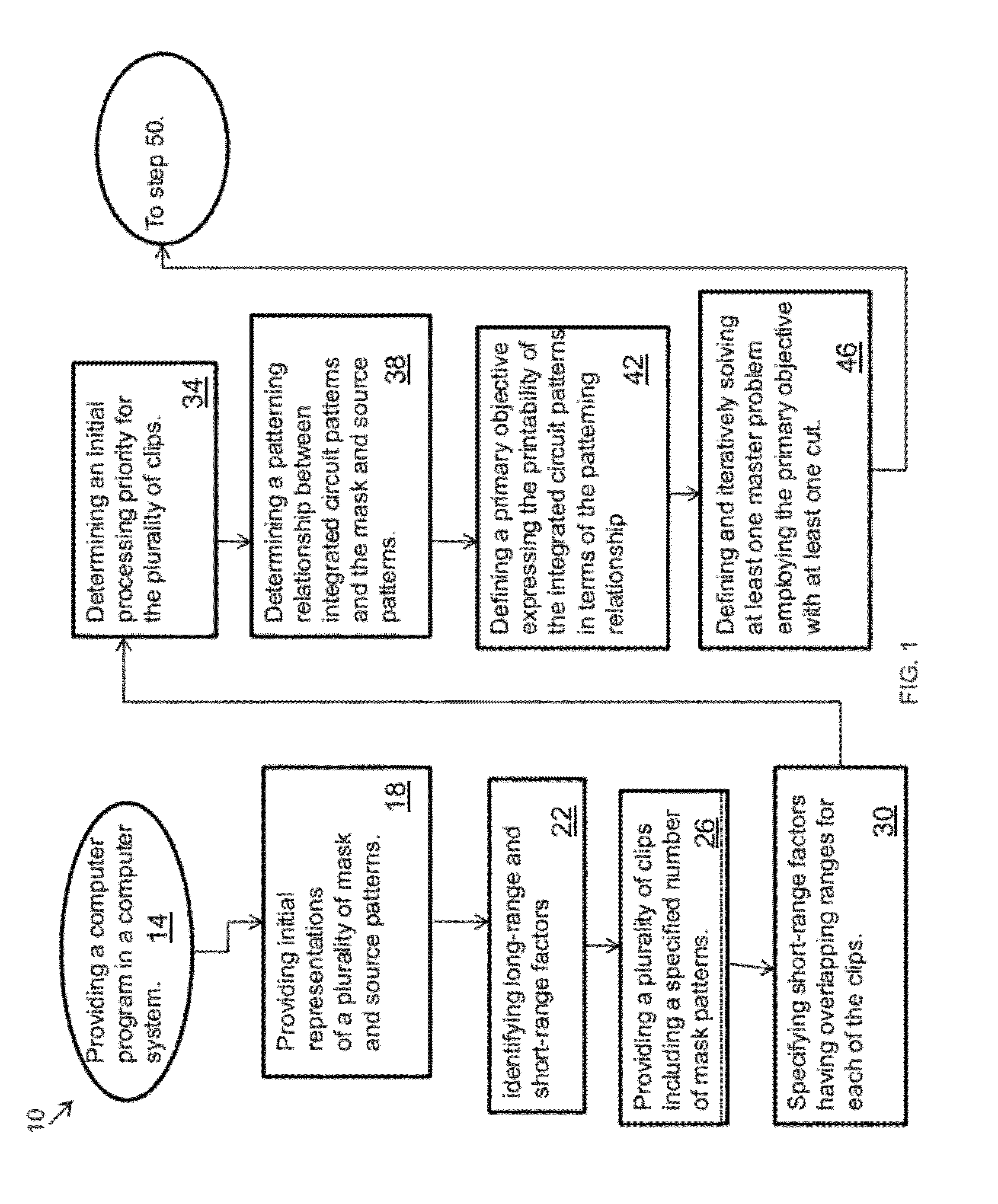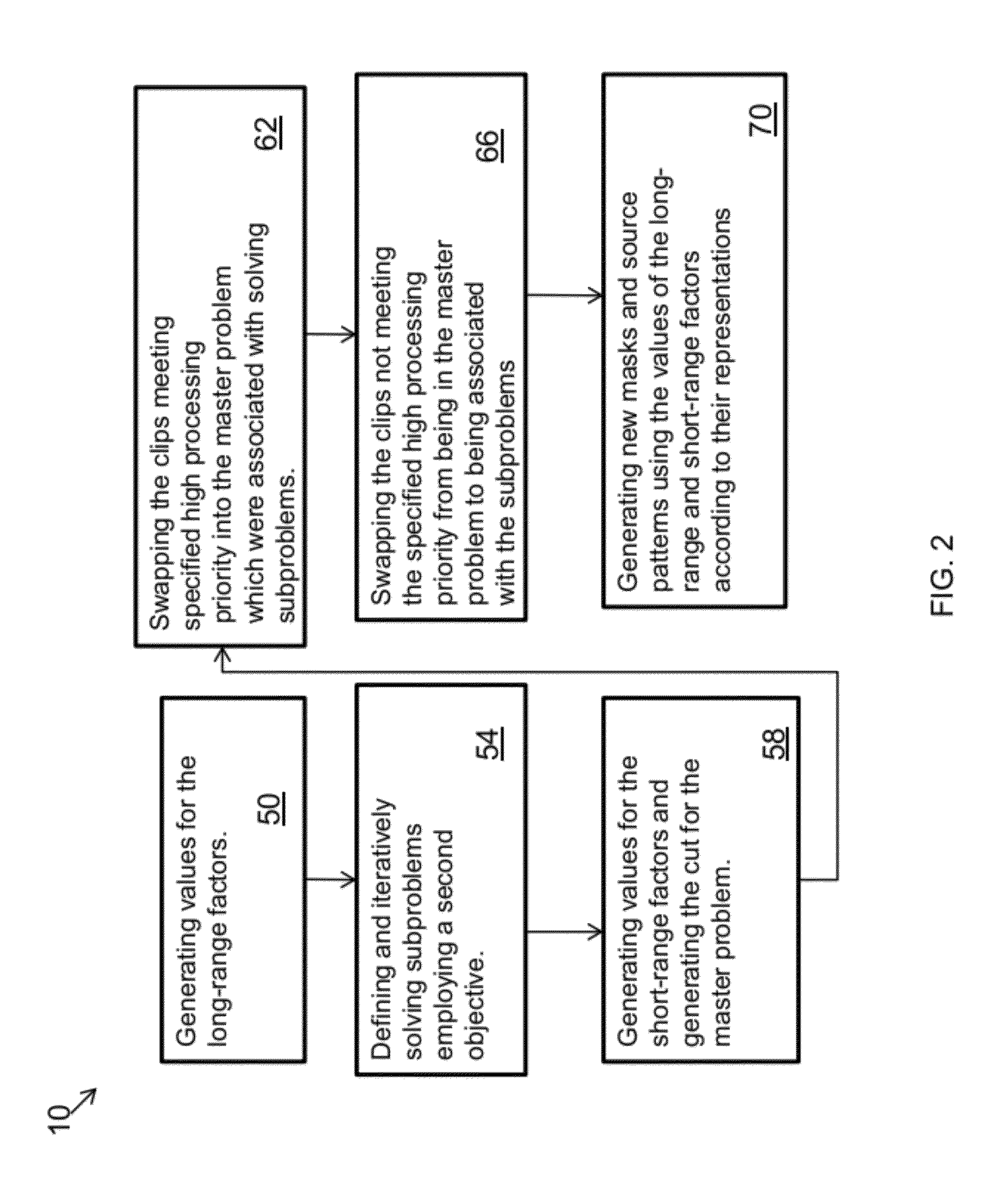Dynamic provisional decomposition of lithographic patterns having different interaction ranges
- Summary
- Abstract
- Description
- Claims
- Application Information
AI Technical Summary
Benefits of technology
Problems solved by technology
Method used
Image
Examples
example problem
[0090
minzs.t.0≤x≤10≤z≤62x+y12≤zx+2y1≥40≤y1≤104x+2y22≤z3x+y2≥20≤y2≤10minzs.t.0≤x≤10≤z≤62x+y12≤zx+2y1≥40≤y1≤104x+2y22≤z3x+y2≥20≤y2≤10Simple idea:Alternately fix subset of variables:Fix x (sources) and optimize (z, yi)In SMO: Mask-Only OptimizationFix yi (masks) and optimize (x, z)In SMO: Source-Only Optimization
[0091]Example Problem
minzs.t.0≤x≤10≤z≤62x+y12≤zx+2y1≥40≤y1≤104x+2y22≤z3x+y2≥20≤y2≤10Simple idea:Alternatingly fix subset of variables:Fix x (sources) and optimize (z, yi)In SMO: Mask-Only OptimizationFix yi (masks) and optimize (x, z)In SMO: Source-Only OptimizationFor this example:Start with x = 0Gives yl = 2, z = 4 and y2 = 2, z = 8Fix yl = 2, y2 = 2Cannot increase x without makingobjective function worseThis procedure stops with x = 0, z = 8suboptimal, even though this problem isconvex (= simple)
[0092]Benders Decomposition: Master Problem
minx,yigTxs.t.Ax=bxL≤x≤xUBi(x,yi)=0yLi≤yi≤yiU(Linear) Master problem (MP):minxgTxs.t.Ax=bcjTx≤djxL≤x≤xU(MP)Only in small x spaceOverestima...
PUM
 Login to View More
Login to View More Abstract
Description
Claims
Application Information
 Login to View More
Login to View More - R&D
- Intellectual Property
- Life Sciences
- Materials
- Tech Scout
- Unparalleled Data Quality
- Higher Quality Content
- 60% Fewer Hallucinations
Browse by: Latest US Patents, China's latest patents, Technical Efficacy Thesaurus, Application Domain, Technology Topic, Popular Technical Reports.
© 2025 PatSnap. All rights reserved.Legal|Privacy policy|Modern Slavery Act Transparency Statement|Sitemap|About US| Contact US: help@patsnap.com



